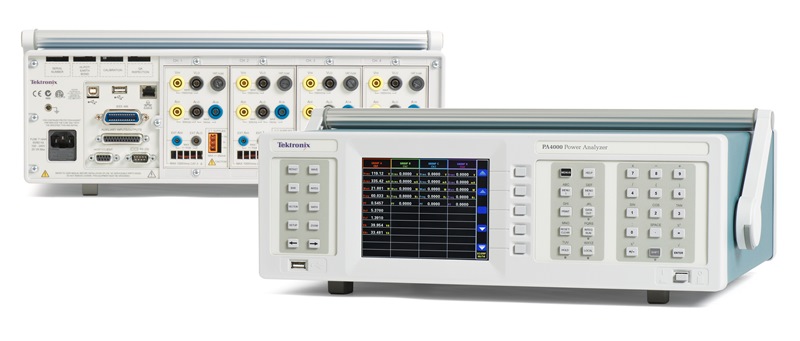It was Tektronix’s interest in the power analysis segment of the instrumentation market that led to the company’s introduction of the PA4000 power analyzer. Having seen significant growth in the power and energy sector over the last few years, the company wanted to round out its power analysis product portfolio.

The desire came to rapid fruition when an IP transfer agreement was executed with partner company Voltech in March of 2013; the next month, the PA4000 was announced. The instrument development project was handled by Andy Tedd, power analyzer engineering manager. With over 20 years’ experience in developing power analysis solutions, he came to Tektronix from Voltech.
The key technological breakthrough was the development of the Spiral Shunt. In electronics, a shunt is an impedance connected in parallel with a circuit to divert, or shunt, some current away from the circuit. When a suitable shunt is placed in parallel with a voltmeter, the voltmeter can be calibrated as an ammeter and thus measure the total current flowing in the circuit.
It is important for reliable measurement that the value of the shunt should not change with time, temperature, or humidity, or with the frequency of the current measured. The Spiral Shunt used in the PA4000 is a new and novel design with several features that work together to improve linearity and stability over all these variables. The material used in the Spiral Shunt is Manganin, an alloy of manganese, copper, and nickel that has stable resistance value over temperature. The alloy is formed into a wide, flat- ribbon shape with a significant area, then insulated and formed into a loop; with the material folded back upon itself, the input and output connections to the shunt are together on the same end.
Ideally, a shunt is purely resistive at all frequencies. But any real-world shunt material will have some inductance, however low. The Spiral Shunt design minimizes inductance by virtue of the loop construction — inductance is effectively cancelled by equal current flowing in both directions, outbound and returning. Low inductance also contributes to higher bandwidth capability.
Higher levels of current through a shunt will create heating, which is a source of non-linearity. To reduce this effect, a cooling fan at one end of the shunt which moves air across the wide surface area of the shunt. The Spiral Shunt’s cooling fan is variable-speed, with speed controlled according to the measured current. In this way the fan’s cooling effect can be precisely controlled to maintain a relatively constant shunt temperature and thus maximize linearity. The remaining small errors are measured and stored as calibration constants within the analyzer to provide a highly accurate measurement system, compensated for amplitude and phase, over the specified 1-MHz bandwidth.
Another important design consideration that contributes to the instrument’s measurement accuracy is the use of discrete Fourier transforms (DFTs) instead of the more typical fast Fourier transforms (FFTs). In power analysis, especially for application such as ac motors, a DFT approach produces more accurate harmonic results. While FFT adds noise and other effects in between the harmonics that must be compensated for, DFT is a simple, textbook technique for reducing noise.
But DFT requires more processing power, so the PA4000 uses one DSP per channel instead of the industry norm of one DSP across four channels. Because of this design, the PA4000 produces very accurate, noise-free harmonic results.
Much effort was also devoted to improving the user interface, so as to make it consistent with other Tektronix instrumentation. Many engineers use Tektronix oscilloscopes in conjunction with the PA4000, and the latter’s interface allows them to work more efficiently. Also supporting usability is the built-in 15-V power supply, which makes it easy to push buttons and start running tests.
Tektronix says that marketplace feedback has been extremely positive worldwide. One customer even reported that he was able to get up and running and take measurements within 15 minutes after setting up the instrument — very unusual for this type of product. The PA4000 success quickly led to the development of the PA1000 Power Analyzer, for single-phase power measurements, and over time, Tektronix sees the product family expanding, with greater accuracy and a broader range of products. Further, Tek will be offering more automated solutions for compliance testing.
Advertisement
Learn more about Tektronix





